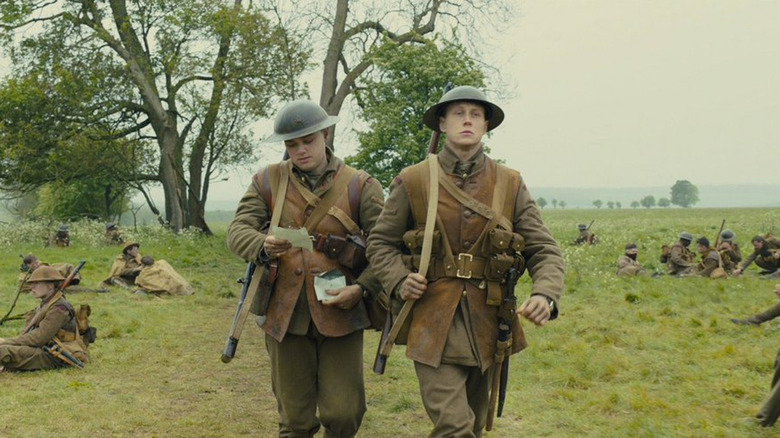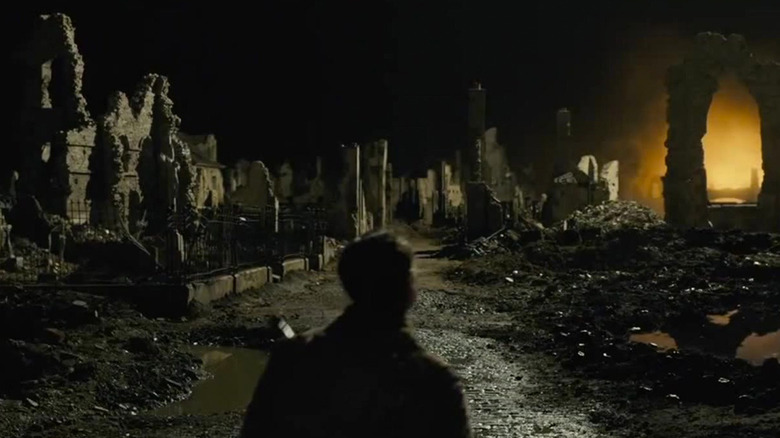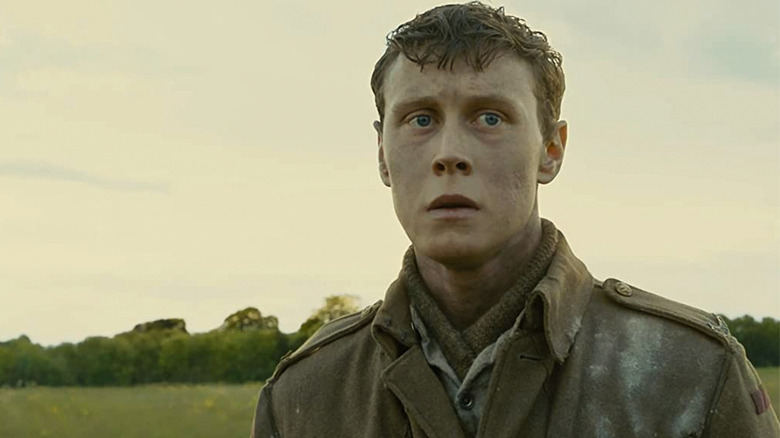The Reason Sam Mendes Broke 1917's Continuous Shot
It's impossible to talk about Sam Mendes' "1917" without discussing its jaw-dropping technical achievements. The story of two soldiers trekking through enemy territory to save a battalion from a German ambush comes equipped with a unique sense of urgency, and for Mendes, there was only one way to portray it on film. The war epic was shot to appear as one continuous take, with meticulous blocking, set design, and cinematography all contributing to the illusion.
You'd be hard-pressed to find the breaks where one eight-minute take ends and another begins (and doesn't that spoil the fun of it anyway?). But as breathtaking as it is to watch the action unspool before our eyes in real time, "1917" does have one noticeable break in continuity — though not for the reason many might think.
From dusk to dawn
"1917" is told from the perspective of two characters: Lance Corporals Tom Blake (Dean-Charles Chapman) and Will Schofield (George MacKay), with an emphasis on Schofield for the latter half of the film. Towards the third act, Schofield encounters a German sniper holed up in an abandoned house. Though he's able to defeat the soldier, a bullet clips him in the helmet and knocks him unconscious. The scene cuts to black, and when he comes to again, night has fallen.
Such a transition can feel out of place in a film determined to tell a continuous story — especially knowing the lengths Mendes and his team (cinematographer Roger Deakins, co-writer Krysty Wilson-Cairns, production designer Dennis Gassner, and editor Lee Smith, to name a few) went through to achieve their one-take wonder. Mendes revealed that the cut was a deliberate creative choice, one that solved a creative dilemma for the director.
"I wanted the movie to go from afternoon to dusk," Mendes told CinemaBlend, "and then from night into dawn." Such a transition would be hard to pull off in a mere two hours — that is, if the story had continued in real time. Breaking Schofield's journey into "two movements" helped to achieve Mendes' vision, and it also allowed the tone to shift from naturalism into something much more surreal.
The hidden horror
One of the most incredible moments in "1917" happens after Schofield wakes. The Night Window scene, as it's come to be known, puts both Schofield and the audience into an entirely different world. It's pitch black outside, save for the light of a burning church on the horizon and the occasional signal flare that Deakins wields with genius precision. The flares serve almost like shooting stars, casting shadows all around the ruins of the abandoned town. It's like a dream — but it devolves into a nightmare just as quickly.
Mendes was keen on capturing both the wonder and the horror of this new world. "It's the moment where the movie shifts from naturalism to something more mythic, I hope. And goes into something that feels like a descent into hell." The allusion is definitely felt: Schofield manages to escape enemy fire by jumping into a rushing river — a metaphor for the River Styx, according to Mendes. He has to wade through the bodies of dead soldiers to reach dry land again, and here the film's "subconscious level of horror" becomes decidedly overt.
It's a transition that feels about as dark as it looks, but it might not have worked had the "1917" team felt confined to the timeline as it stood. Cutting from afternoon to evening helped Mendes's transition flow smoothly without affecting the story, and even injected Schofield's race against time with an even greater sense of urgency.


